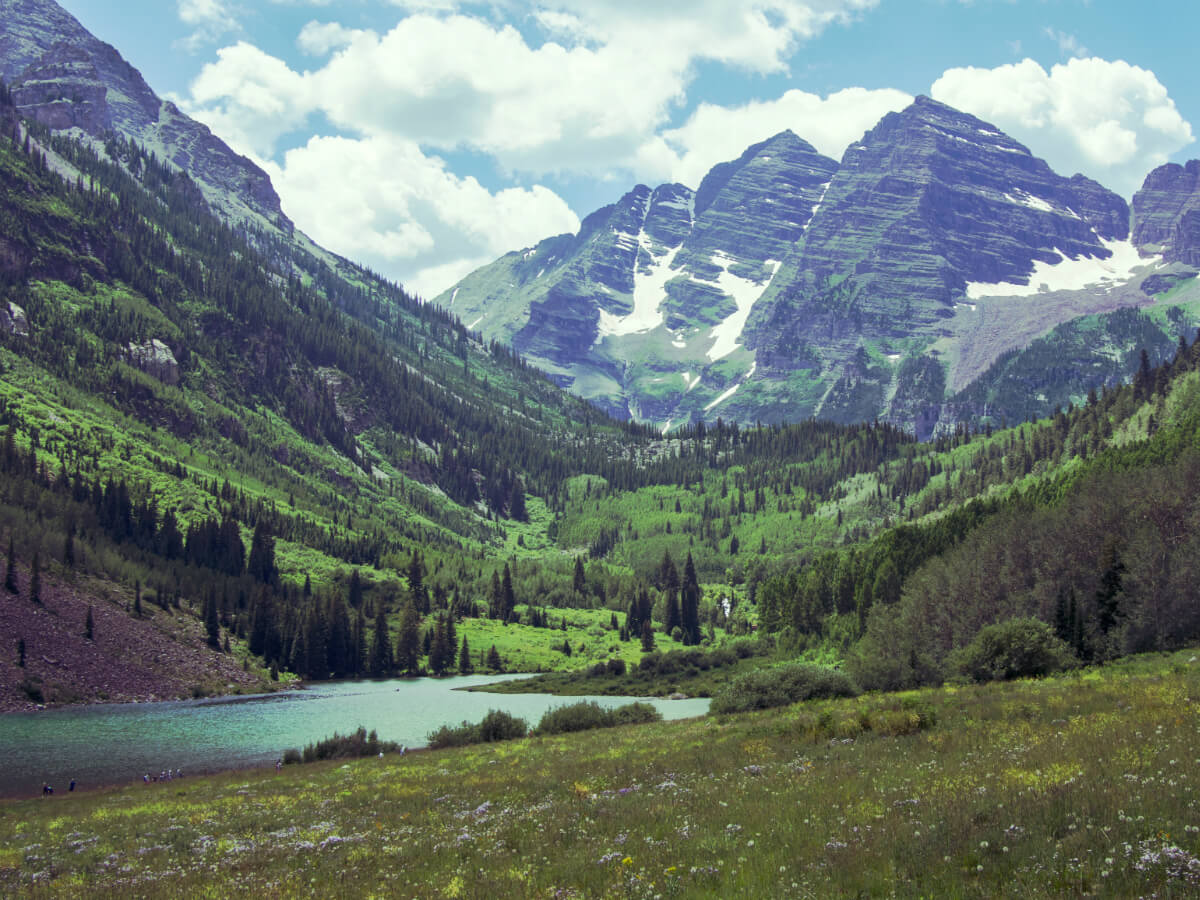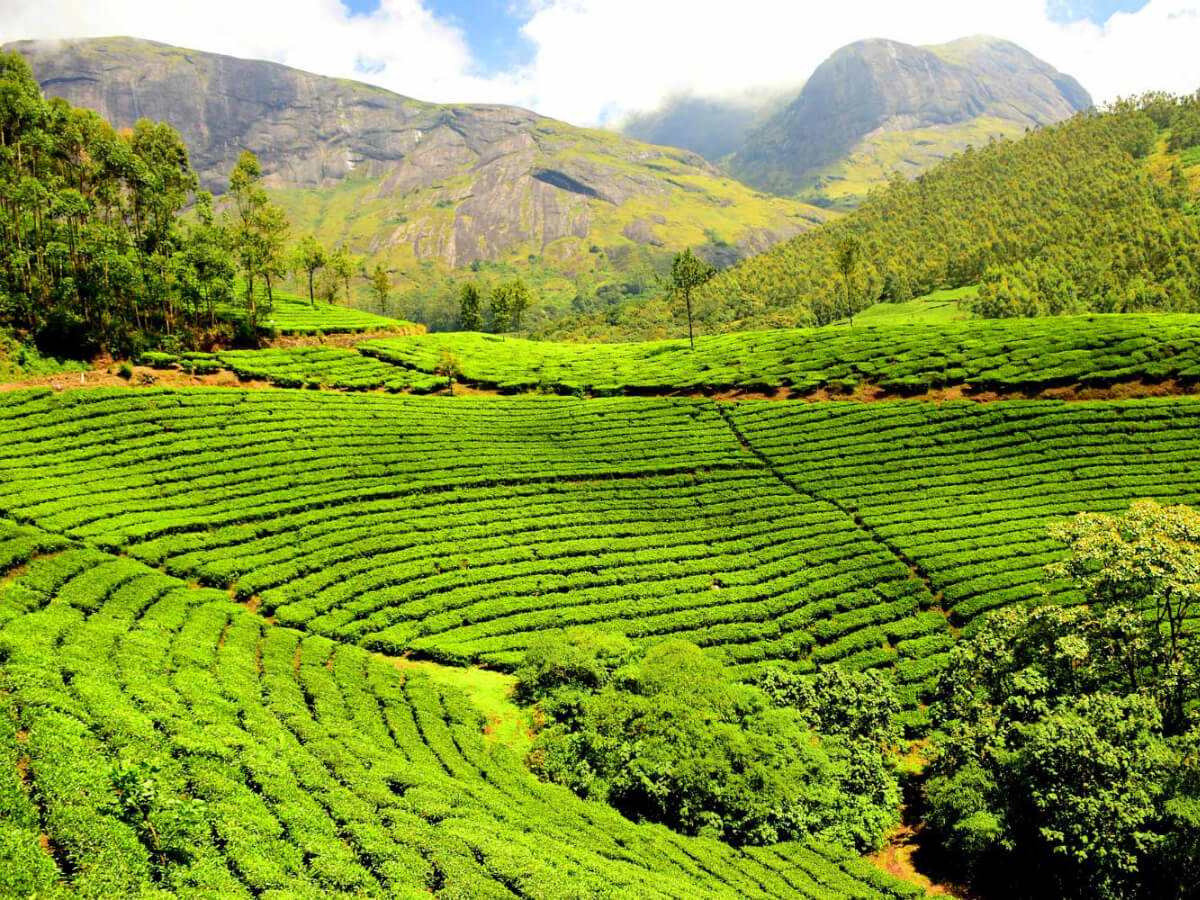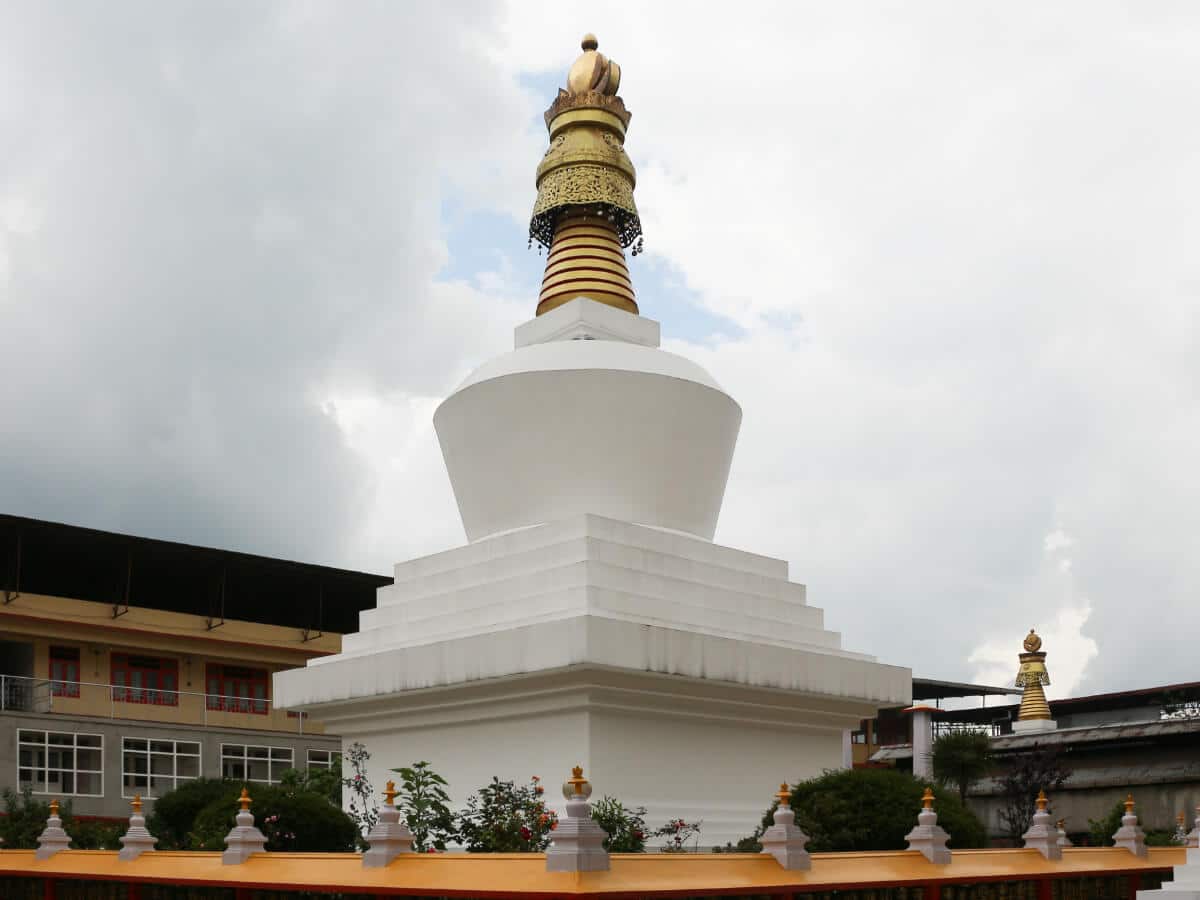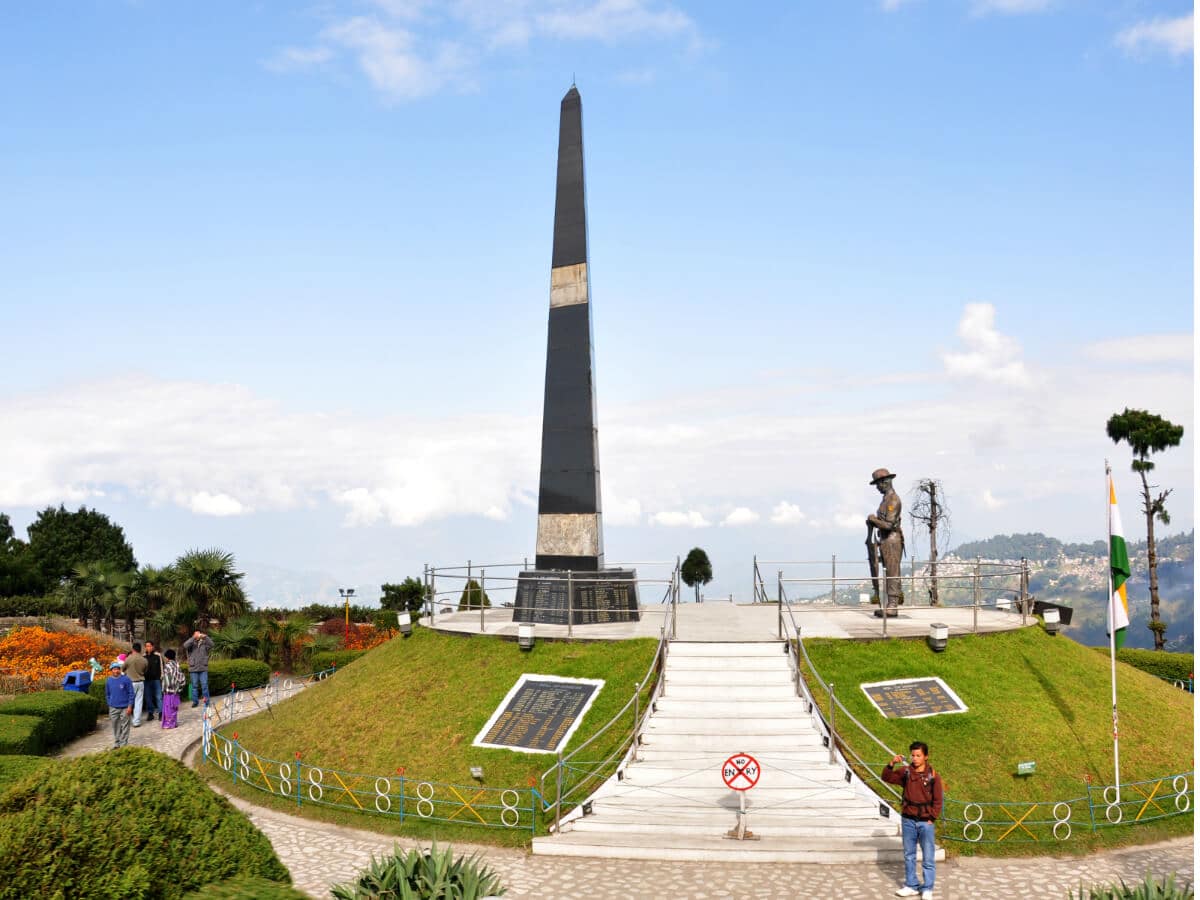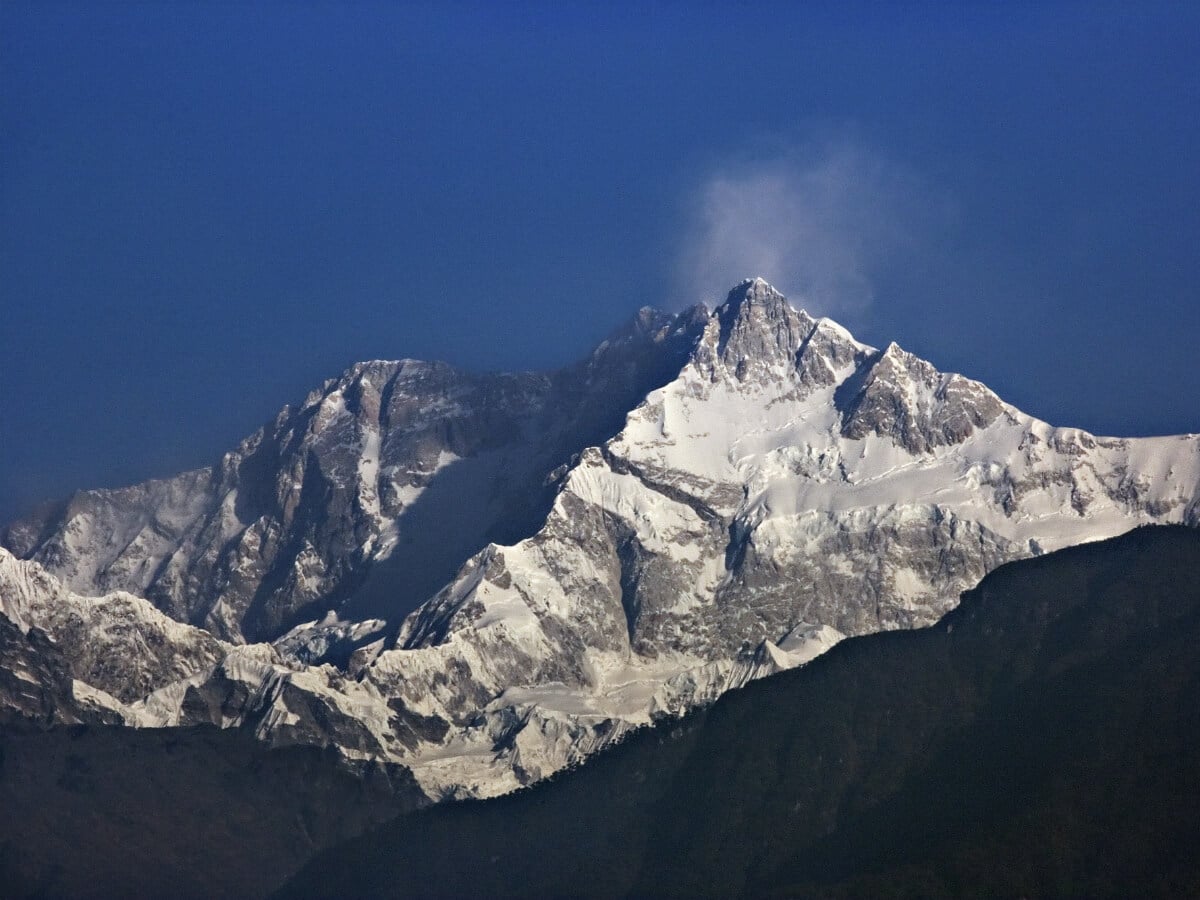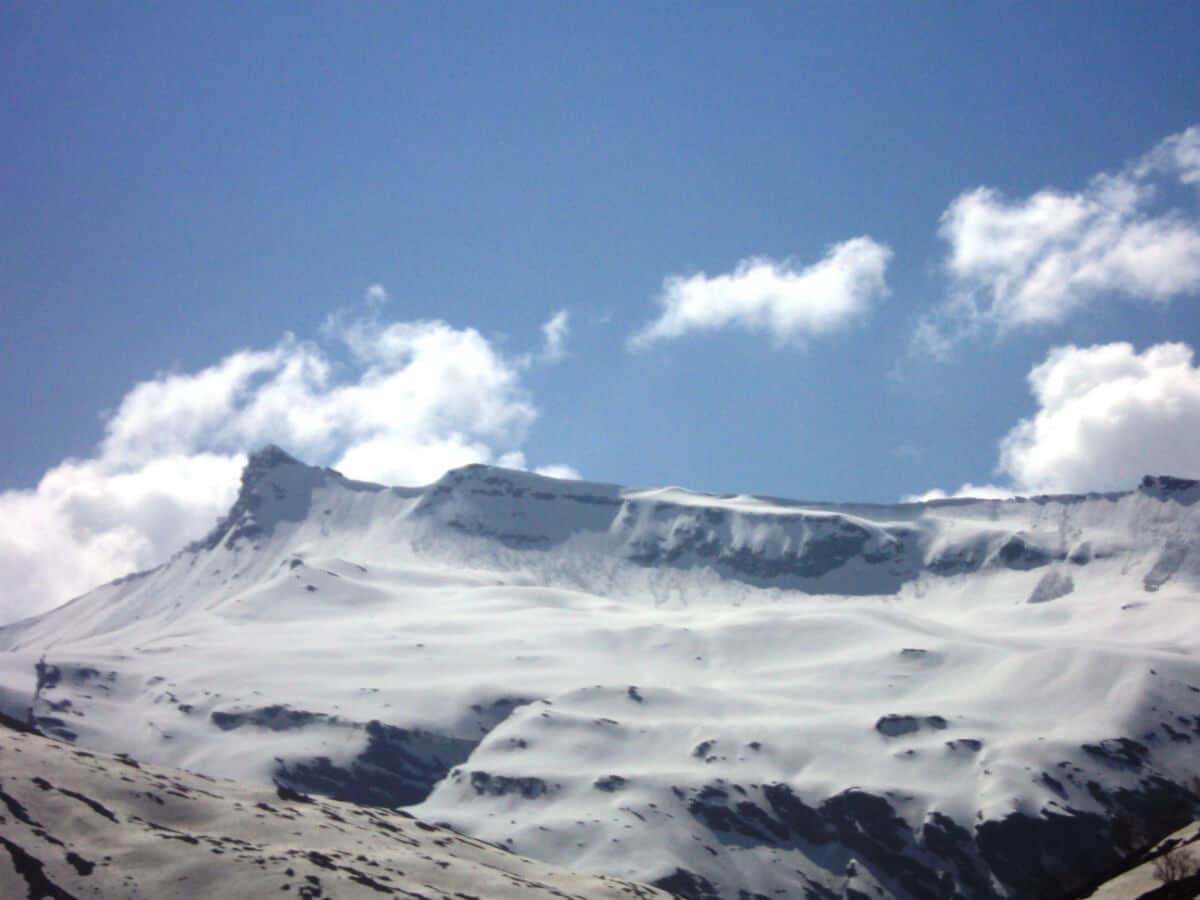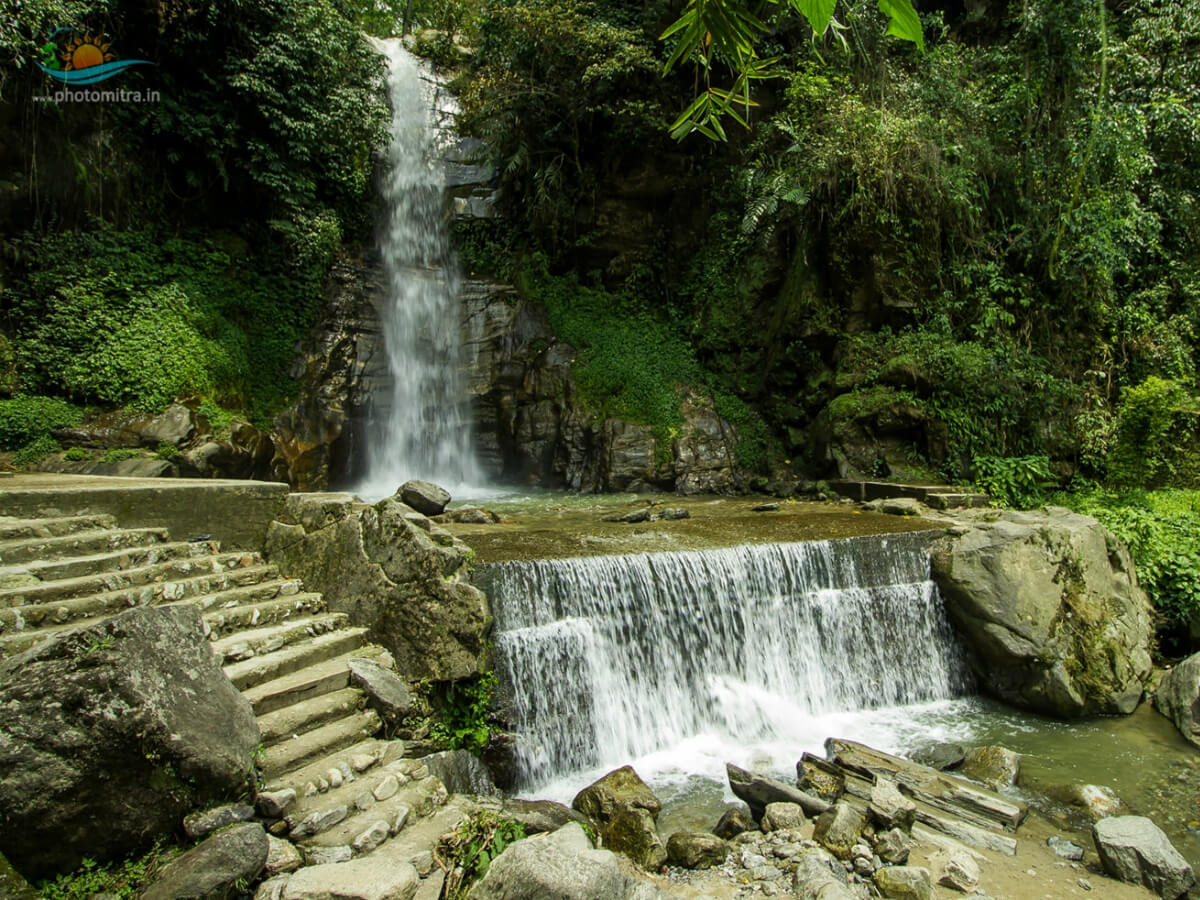Tour Packages
West Bengal Tour Packages
SUPER DEAL PRICE
STARTS FROM
per person on twin sharing

ATMs accessible in cities, limited in remote areas.

Credit cards accepted widely in urban areas.

Banks easily found in cities, limited in villages.

The legal drinking age in West Bengal is 21.

West Bengal locals are renowned for their hospitality.
West Bengal - Visitors Statistics

Annually
8,50,00,000
Male51%
Female49%
By Purpose
Couples
For Newlywed Vacations
Family
For Family Vacations
Top Tourist Attractions
Batasia Loop
Science City
Belur Math
Tiger Hill
Victoria Memorial
Sundarbans National Park
Birla Planetarium
Indian Museum
Everything You Need to Know About West Bengal
India is a cultural potpourri with a diverse heritage and a variety of languages, traditions, and religions. If you’re looking for a unique place that’s home to multiple ethnicities and religions and known for its contribution to art, theatre, and poetry, visit West Bengal. Situated in the eastern region of India, West Bengal has everything from beaches and hill stations to historical monuments, temples, and warm people. The food of the state alone is enough to attract tourists from all around the world. Be it the sweet delights or the flavourful fish dishes, your tastebuds are in for a ride with the culinary brilliance of West Bengal. Let’s do a deep dive into the history, art, culture, shopping scenes, cuisine, and tourist attractions of the state so you can decide when to grab our fantastic West Bengal tour packages.
Table of Content:
- About West Bengal
- Tidbits
- Essential Tips To Know Before Travelling To West Bengal
- West Bengal At A Glance
- Top Reasons To Visit West Bengal
- Best Time To Visit West Bengal
- Top Things To Do In West Bengal
- Shopping In West Bengal
- Dos and Don’ts For Indian Travellers
- Foods To Try Out In West Bengal
- Top Places to Visit In West Bengal
- Art And Culture In West Bengal
About West Bengal
West Bengal’s history has its roots in the Vedic period when it was called the kingdom of Vanga. In the 3rd century BCE, when emperor Ashoka ruled it, West Bengal became part of the extensive Mauryan empire. The Pala dynasty ushered in the golden period in West Bengal, making notable contributions to art, architecture, and literature. British colonial rule in Bengal started during the 18th century. In 1772, Kolkata (which was then known as Calcutta) became the capital of British India.
The 19th century initiated the Bengal Renaissance, a cultural, artistic, intellectual, and social movement in Bengal. Figures like Swami Vivekananda, Ishwar Chandra Vidyasagar, and Raja Ram Mohan Roy fought for social causes such as the abolition of sati and women’s education. Bengali literature, theatre, and art were boosted during this period as well, with significant contributions from figures like Rabindranath Tagore.
The biggest religions in West Bengal are Hinduism and Islam. The other faiths seen across the state are Buddhism, Sikhism, Jainism, and Christianity. The traditional attire of men back in the day was a dhoti and kurta. Women mainly wore sarees while uniquely draping the pallu compared to the rest of the country. With the evolution of time, women started to wear salwar kameez, and in the current generation, women wear all sorts of modern clothes, such as jeans, skirts, and dresses. The jute and tea plantations in West Bengal create a lot of jobs. The people of the state also have jobs in the education and banking sectors. The majority of the population of West Bengal has jobs in the field of agriculture, working as agricultural laborers and cultivators.
Tidbits
- Kolkata, the capital of West Bengal, was the capital of British India from 1772 to 1911.
- West Bengal is home to Birla Planetarium, the largest planetarium in Asia and the second-largest planetarium in the world.
- The Sundarbans, a UNESCO World Heritage Site, is the largest contiguous mangrove forest in the world.
- Darjeeling, a district in West Bengal, is home to the premium Darjeeling tea, a sought-after black tea.
- The oldest and largest multipurpose museum in Asia, the Indian Museum, is in Kolkata.
- The state is home to the oldest operating port in India, the Kolkata Port.
- Bengal is the anglicised version of Bangla, derived from the Sanskrit term Vanga, referring to an ancient Dravidian kingdom.
- Durga Puja celebrations in West Bengal are considered an Intangible Cultural Heritage of Humanity.
- Calcutta is the birthplace of the Indo-Chinese cuisine. It is still the best place to sample Indian Chinese food.
Essential Tips To Know Before Travelling To West Bengal
- Kolkata’s metro system connects most parts of the city and is a quick, efficient, and affordable way to get around.
- Common modes of transportation in West Bengal include buses, trains, and taxis.
- Be careful of your belongings when you’re in a crowded place. Also, try not to step out too late at night, especially in remote areas.
- West Bengal is relatively inexpensive compared to the other metro cities in India. You can still find a meal for Rs 100 in the state.
- The water quality in West Bengal isn’t always the best; it’s best to carry bottled water.
- Tipping taxi drivers is not expected in West Bengal. However, porters at train stations, airports, and hotels expect to be tipped.
- Winter is the best time to visit West Bengal, thanks to the pleasant climate and the Durga Puja festivities.
West Bengal At A Glance
| Category | Details |
| State | West Bengal |
| Currency | The Indian rupee |
| Capital City | Kolkata |
| High season | November to February |
| National Flower | Night-blooming jasmine |
| Standard Voltage | 220-240 volts |
| National Animal | Fishing cat |
| Languages | Official language: Bengali; unofficial languages: Hindi, Santali, Urdu, Nepali |
| Famous Tourist Attractions | Victoria Memorial, Sundarbans National Park, Digha, Belur Math, Mandarmani, Tiger Hill, Padmaja Naidu Himalayan Zoological Park, Batasia Loop |
| Things To Do | White water rafting, kayaking, paragliding, mangrove safari |
| Famous Food | Aloo posto, shorshe ilish, shukto, sandesh, roshogolla, mishti doi, chingri malai curry |
| Places To Visit | Kolkata, Darjeeling, Shantiniketan, Kalimpong, Bishnupur, Siliguri |
| Souvenirs To Buy | Traditional Bengali sarees, Bengali sweets, conch shell bangles, terracotta handicrafts, kantha stitch work |
Top Reasons To Visit West Bengal
Culinary Haven
Bengalis love their food. It’s almost as if their entire day is planned around food. Rice forms a staple of their everyday diet. These meals are also often accompanied by rotis, meat, eggs, fish, and vegetables in thick curries. You will find plenty of fish dishes in Bengal, such as bhapa ilish, bhetki paturi, prawns in malai curry, and so on. For the ones who like sweets, Bengal has an almost endless array of sweet dishes for you to taste, including roshogollas, sandesh, malpua, ras malai, mishti doi, rajbhog, and kheer kadam, to name a few.
It’s also a haven for street food lovers with puchka, jhalmuri, and ghugni being crowd favourites. Kathi rolls are believed to have originated in a Kolkata restaurant.
It is also the birthplace of Indo-Chinese cuisine; Chinatown in Tangra is the best place to sample authentic Han Chinese cuisine.
Rich Cultural Heritage
The culture of West Bengal is reflected in several ways. You can experience the colonial architecture of the state through structures such as the Victoria Memorial, Indian Museum, and Howrah Bridge. The state is also known to have contributed to the rich temple architecture of India. There is the Dakshineswar Kali Temple, Mayapur ISKCON Temple, and the terracotta temples of Bishnupur. The fact that the state is rich in literary culture is evident through the College Street region of Kolkata and the lanes of Shantiniketan that echo the life of Rabindranath Tagore. You can catch plays to get a taste of Bengali theatre and also witness baul songs when you’re in Shantiniketan.
Paradise For Shoppers
West Bengal is a paradise for shopaholics. From traditional and handmade products to luxury items, there is a plethora of souvenirs to take back home from your trip. On the one hand are the streetside bazaars, and on the other hand are the modern malls for tourists to explore. Remember to look into the traditional jewellery, handloom sarees, kantha embroidery products, and Bengali sweets while shopping in West Bengal.
Abundance Of Festivals
West Bengal celebrates numerous festivals scattered throughout the year. Since it’s a state where many cultures live in harmony, these festivals form a part of Bengal’s cultural heritage, too. The Bengali New Year, or Nobo Borsho, takes place in April, allowing the year to begin in an auspicious manner. Depending on the month you travel to West Bengal, you can see Kali Puja, Saraswati Puja, Lakshmi Puja, etc. Durga Puja is the one festival that everyone must experience in Bengal, a celebration lasting 10 glorious days. This is when you can visit the beautifully decorated pandals, taste delicious street food, and seek the blessings of Maa Durga.
Best Time To Visit West Bengal
West Bengal has coastal areas on its southern side and the Himalayan mountains on the northern side. Due to this eclectic topography, the state’s climate is also diverse. The weather of West Bengal is intrinsically connected to the state’s biodiversity, agricultural practices, and people’s lifestyle. While North Bengal experiences humid sub-tropical weather, the climate in South Bengal is more tropical. The monsoon season is vital to the overall climate of West Bengal and directly contributes to its tourism, water resources, and agricultural fertility. Let’s now look at what every season in West Bengal brings about so that you can decide when to book our West Bengal tour packages accordingly.
West Bengal In Summer (March - June)
The temperature in West Bengal during the summer season ranges from 20 degrees Celsius to 45 degrees Celsius. April and May are usually the hottest months of the year. Due to the sweltering heat, it is advised not to visit the state during this season as sightseeing is exhausting. Owing to a phenomenon known as Kalbaisakhi, the plains of West Bengal often experience rainfall and thunderstorms during the summer season. The temperature in places like Darjeeling and Jalpaiguri remains bearable, coming to an average of about 20 degrees Celsius. If you visit the state during this season, you can experience the festivals Dol Purnima and Pohela Boishakh (Bengali New Year).
West Bengal In Monsoon (July - September)
The average rainfall varies from one region to another in West Bengal, oscillating between 120 cm and 250 cm. Due to the state’s topography, the western plateau receives less rainfall than the hilly region, which experiences heavy rains at this time. Certain districts, such as Bankura and Purulia, are prone to droughts during West Bengal’s monsoon season.
The state’s coastal regions can be quite hot and humid even during the rainy season, so you should plan your holiday accordingly. The northern parts of West Bengal are at risk of sudden landslides with the onset of monsoon. The festivals you can experience in the state with our monsoon West Bengal tour packages include Vishwakarma Puja and Ratha Yatra. Although the state has an autumn season, it is very short-lived, usually lasting from October to mid-November. During September and October, the state celebrates its biggest festival, Durga Puja.
West Bengal In Winter (November - February)
The plains of West Bengal usually experience a mild winter, with temperatures remaining between 9 and 15 degrees Celsius. The maximum temperature could go up to 23 to 26 degrees Celsius. The mountainous areas experience temperatures between 0 and 12 degrees Celsius. People living in the state’s eastern Himalayan belt also experience snowfall during the winter.
Top Things To Do In West Bengal
West Bengal is a paradise for various kinds of travellers. Whether you’re looking for historical locations, adventurous activities, or cultural spots, the state has it all. Listed below are the places to visit in West Bengal and the activities to participate in:
Things To Do As A Family
Victoria Memorial
The Victoria Memorial is one of the most iconic landmarks in Kolkata, located in the heart of the city. It was ordered to be built by Lord Curzon, the Viceroy of British India. The structure was meant to pay tribute to Queen Victoria after she passed away in 1901. The funding for the edifice came primarily from the people of India, and Sir William Emerson, a renowned British architect, designed it. Emerson also served as the president of the Royal Institute of British Architects (RIBA) from 1899 to 1902. In January 1906, the foundation stone for the Victoria Memorial was laid by the Prince of Wales, who was later crowned King George V. The monument was officially opened to the public in December 1921. The marble used to create the Victoria Memorial was the same as the one used to build the Taj Mahal. The corner domes are influenced by Mughal architecture. The monument also features a bronze statue of the Angel of Victory at the top of the central dome.
Sundarbans National Park
The Sundarbans National Park is adjacent to the Sundarbans Reserve Forest, the world’s largest contiguous mangrove forest. In 1987, the park was declared a UNESCO World Heritage Site. The Sundarbans is sprawled over about 10,000 square km across India and Bangladesh. Situated close to 110 km south of Kolkata, the Sundarbans is also a biosphere and a tiger reserve home to the Royal Bengal Tiger. Boasting a humongous range of aquatic and terrestrial flora and fauna, this is where visitors can come across creatures such as foxes, wild boars, fishing cats, saltwater crocodiles, spotted deer, and rhesus macaques.
Birla Planetarium
The Birla Planetarium is known to be the largest planetarium in Asia and the second-largest planetarium in the world. Located near the Victoria Memorial and St. Paul’s Cathedral, the architecture of this edifice is loosely based on the Sanchi Stupa in Madhya Pradesh. Jawaharlal Nehru inaugurated it in July 1963. Open from Monday to Sunday, from 12 pm to 6 pm, the planetarium hosts shows in English, Hindi, Bengali, and other regional languages. The tickets for these are made available half an hour before each show. If you’re interested in science and astronomy, this place is a must-visit. Popularly known as Tara Mandal, the planetarium has designed and presented over 300 astronomical projects to students and the public to date.
Digha
Digha is a beach town in West Bengal’s Purba Medinipur district. It is popular among tourists and locals who are looking for a quick, relaxing getaway. Known for its beaches and religious monuments, Digha is the perfect destination for couples and families. Popularly called the ‘Brighton of the East,’ the town is divided into two parts, namely Old Digha and New Digha.
Indian Museum
Founded by the Asiatic Society of Bengal in 1814, the Indian Museum in Kolkata is Asia’s oldest and largest multipurpose museum. Also known as Jadughar, the museum boasts an impressive collection of ancient sculptures, Egyptian mummies, contemporary paintings, skeletons, fossils, ornaments, armours, antiques, Mughal paintings, and sacred relics of Buddha. The museum contains 35 galleries and is divided into six sections: art, anthropology, archaeology, geology, economic botany, and zoology. If you wish to dig further into historical details, you can also access the bookshop and library located within the museum. Food, beverages, and large bags aren’t allowed inside the museum. If you’re carrying a small bag, you can keep it at the entrance.
Dakshineswar Kali Temple
Located in the North 24 Parganas district of West Bengal, the Dakshineswar Kali Temple is a temple that was built in the 19th century. Visitors will witness the statues of Maa Bhavatarini, one of the forms of Goddess Kali. Sri Ramakrishna Paramahamsa served as the head priest at this temple for three decades, from 1855 till he passed away in 1886. The structure was founded by Rani Rashmoni in 1855 and was built using the nine-spire design style derived from the Bengal School of Architecture. The entire temple complex is decorated with towering spires, embellished domes, detailed carvings, and sculptures based on scenes from Hindu mythology.
Belur Math
Belur Math is situated on the west bank of the Hooghly River in the Howrah district of West Bengal. It serves as the headquarters of the Ramakrishna Math and Ramakrishna Mission, which are non-sectarian and non-political spiritual organisations. This religious centre was founded by Swami Vivekananda in 1897. Serving as the centre of the Ramakrishna Movement, the temple’s architecture symbolises the union of all religions, including Hinduism, Buddhism, Islam, and Christianity. Swami Vivekananda came up with the design of Belur Math, and Swami Vijnanananda was the architect behind the temple. The Sanchi Stupa and the main entrance of the Ajanta Caves inspire the temple’s main entrance.
Mandarmani
Mandarmani is a beach resort town located about 180 km away from Kolkata on the Kolkata-Digha route. When you visit the state with GT Holidays’ West Bengal tour packages and are in the mood for a relaxing getaway, this is the place to run off to. With its untouched beaches and luxurious resorts, Mandarmani offers the perfect escape from the hustle and bustle of city life. Mandarmani Beach is known to be one of the longest-drivable beaches in India. A unique attraction of Mandarmani Beach is the sight of red crabs that crawl along the length of the beach, which is 13 km long.
Science City
Kolkata’s Science City is the largest science centre in India. The centre opened to the public in July 1997 and has had almost 30 million visitors. Science City comprises two facilities: the Science Centre and the Convention Centre. Visitors can find different areas within the Science Centre, such as the Space Odyssey, Science Exploration Hall, Earth Exploration Hall, Dynamotion, Maritime Centre, and Science Park. The Convention Centre complex houses a main auditorium and a mini auditorium, with seating capacities of 2232 and 392, respectively. Several cultural programmes, conferences, trade exhibitions, and conventions are held at this complex.
Tiger Hill
Standing at an altitude of 2,567 metres above sea level and located about 13 km away from Darjeeling is the iconic Tiger Hill. Visitors must catch the spellbinding sunrise view from Tiger Hill, during which the peaks of Kanchenjunga light up. As seen from this point, Kanchenjunga can appear taller than Mount Everest due to the Earth’s curvature and since it’s closer to the viewer. Each morning, hundreds of people gather at Tiger Hill to witness the magical view of the snow-capped mountains reflecting views of gold, orange, and pink. The best time to get the sunrise view from Tiger Hill is from 4 am to 6 am.
Padmaja Naidu Himalayan Zoological Park
Padmaja Naidu Himalayan Zoological Park, also known as Darjeeling Zoo, was established in August 1958. Known for its breeding and conservation programs, it’s renowned for providing shelter to endangered animals such as red pandas, snow leopards, and the Himalayan wolf. Situated at an average elevation of 7,000 feet, it’s the largest high-altitude zoo in the country.
Nine captive red pandas were released back into the wild between 2022 and 2024, owing to the efforts of the Padmaja Naidu Himalayan Zoological Park. Seven of these pandas were females, and two of them were males. Due to these efforts, the zoo was shortlisted for the WAZA Conservation and Environmental Sustainability Award in 2024. Some of the other animals you can come across at this zoo are Asiatic black bears, sambar deer, Lady Amherst’s pheasant, barking deer, and the Royal Bengal Tiger.
Kanchenjunga
Standing tall at a height of 28,169 feet, Kanchenjunga is the third-highest mountain in the world. The name ‘Kanchenjunga’ is derived from the Tibetan language, translating to ‘The five treasures of the high snow’. For the adventurous people, remember that several trekking routes in and around Kanchenjunga allow you to witness the beauty of forests and the countryside. Four of the five peaks of Kanchenjunga can be viewed from numerous points in Darjeeling and Gangtok. The mountain is considered sacred in Sikkim and Nepal and is significant in the local religious rituals and in mythology.
Batasia Loop
The Batasia Loop offers a panoramic view of the Darjeeling hills. One of the best ways to experience the Batasia Loop is to hop on a toy train ride that passes through this loop. In the centre of the Batasia Loop is a garden around which the toy train track is designed. Covering an area of 50,000 square feet, the garden is filled with perennial and seasonal shrubs and flowers. Although Batasia Loop is a spot that can be visited all year, the best seasons to see it are spring and autumn. It’s open to visitors every day of the week, including Sundays, from 6 am to 5 pm.
Things To Do For Adventure Lovers
- Paragliding (Kalimpong)
- White water rafting (Teesta River, Darjeeling)
- Mangrove safari (Sundarbans)
- Kayaking (Eco Park, Kolkata)
- Ziplining (Mandarmani Beach)
- Mountain biking (Purulia)
Shopping In West Bengal
West Bengal offers an eclectic bunch of souvenirs for travellers to buy. Here are the things you can shop for in the state and the best places to shop from:
What To Buy
Conch Shell Bangles
Conch shell bangles, locally known as shankha pola, are worn by Bengali brides. These auspicious bangles are made from conch shells and often contain detailed carvings and red lacquer. With religious and cultural significance, you can also get your conch shell bangle customised with a bit of gold. You will often find these being made in the bylanes of Bishnupur. The conch shell bangles contain various intricate designs, from horses and temples to Bengali words.
Traditional Bengali Sarees
Traditional Bengali sarees are loved across India and worldwide for their intricate craftsmanship. Forming a significant part of Bengal’s customs and rich cultural heritage, these sarees have complex patterns and nuanced embroidery. In fact, the tradition of handloom weaving in Bengal is not just limited to sarees. You can also find scarves, shirts, dresses, and more in this category.
There are taant sarees, which are thin and crisp cotton sarees with thick borders that are best for those who wear sarees every day. You can get your hands on exquisite baluchari sarees that contain detailed motifs and intricate brocade work. Back then, these sarees had patterns that depicted the mythological scenes and stories from epics like Ramayana and Mahabharata. With time, the designs also came to include floral patterns, courtly life, and scenes of royal ceremonies. These silk series usually contain rich colours like red, yellow, green, and blue. The other Bengali sarees you can shop for are kantha, jamdani, and tangail sarees.
Terracotta Handicrafts
Terracotta art has always been vital to West Bengal’s cultural legacy. The roots of the state’s terracotta clay craft were laid more than a thousand years ago, influenced by several dynasties that ruled the region. Among the various terracotta items you can get for yourself, some of the most popular ones include musical instruments, Bankura horses, home décor items, and jewellery. You can also buy terracotta utensils from Bengal, such as bowls and spoons.
Kantha Stitch Work
Kantha embroidery is a type of embroidery craft with roots in West Bengal and Bangladesh. Renowned for its intricate threadwork, numerous motifs and patterns are stitched onto kantha products using vibrant threads. You can buy kantha embroidered blankets, scarves, bedspreads, cushions, and sarees.
Bengali Sweets
If you have a sweet tooth, exploring the sweets of Bengal will be an absolute delight for your tastebuds. Remember to bring some back home for your friends and family as well. Some of the most iconic Bengali sweets you can buy from the state are roshogolla, sandesh, kheer kodom, mishti doi, and cham-cham.
Jute Products
West Bengal is known to be the prime centre of the jute industry and is the largest producer of jute in the country. Search for jute bags, jute mats, jute rugs, and jute table covers during your holiday in West Bengal.
Darjeeling Tea
When you visit Darjeeling with GT Holidays’ West Bengal tour packages, you can’t return home without a pack of Darjeeling tea. It’s often called the ‘champagne of teas’ because of its unique aroma, delicious taste, and the scrupulous process of making it. There is a wide range of flavours and types you can pick from, including first flush, second flush, green, and black.
Where To Shop
- New Market (Kolkata): For jewellery, sarees, clothes, shoes, accessories.
- Gariahat (Kolkata): For sarees, jewellery, bags.
- South City Mall (Kolkata): For luxury brands, clothes, skincare, makeup.
- Dakshinapan Shopping Center (Kolkata): For jewellery, clothes, handicrafts.
- College Street (Kolkata): For secondhand books.
- Floating Market Patuli (Kolkata): For fruits, vegetables, flowers, meat, groceries.
- Sonajhuri Haat (Shantiniketan): For handmade jewellery, clothes, handicrafts.
- Hatibagan Market (Kolkata): For clothes, jewellery, shoes.
- Bara Bazar (Kolkata): For clothes, cosmetics, textiles, electronic goods.
- Nehru Road (Darjeeling): For woollen clothes, Darjeeling tea, books, handicrafts, paintings, leather handbags.
- Batasia Loop Market (Darjeeling): For accessories, woollen clothes, home décor items.
- Ghoom Monastery Market (Darjeeling): For bags, Tibetan artefacts, Tibetan Buddhist paintings.
Things To Remember When Shopping In West Bengal
- Bargaining is common in the markets of West Bengal. However, be respectful of the shopkeepers and quote a price that benefits everyone.
- Most of the stores in Kolkata open at around 9 am and close at around 9 pm.
- The shops in Darjeeling usually open at around 9 am or 10 am and remain open till 7:30 pm.
- Some of the markets in Kolkata remain closed on Sundays.
- Most of the stores in Darjeeling are open on Sundays.
Dos and Don’ts For Indian Travellers
- Since the vegetation in West Bengal is fragile, make sure to follow the designated trails.
- Do try to leave a donation when you visit a monastery in West Bengal. Also, it’s a custom to circle a shrine in a clockwise direction in the state.
- Respect the sanctity of the holy sites and also show respect for the local culture.
- Don’t talk loudly or indulge in smoking and alcohol around a sacred place.
- When you visit a forest area in West Bengal, don’t use plastic bottles or plastic bags as it harms the environment. Don’t throw it in the forest; instead, carry it back so you can throw it in a garbage bin.
- In West Bengal, especially in the Himalayan region, it is illegal to take away flora and fauna in the form of roots or seeds.
Foods To Try Out In West Bengal
Among the many elements that West Bengal is famous for, one of the most vital bits that tops the list is the state’s cuisine. The food of West Bengal has a mix of sweet and savoury flavours, owing to its intricate history and the presence of local and fresh ingredients. Given that agriculture is significant to the economy as well as the landscape of West Bengal, tourists will notice plenty of coastal dishes in its cuisine. Since the state is a potpourri of eclectic cultures, there has been a culinary evolution over the ages. Bengalis love their fish based dishes, as is evident in the popular items like chingri malai curry and shorshe ilish.
West Bengal is known to be the largest rice producing state in India, and hence, rice is a staple ingredient in most meals across the state. Rice lovers will indeed be pleased with the food they consume in the state with our West Bengal tour packages. If you have a sweet tooth, don’t forget to dig into the plethora of sweets that West Bengal is renowned for, including roshogolla, sandesh, mishti doi, pantua, malpua, and payesh. Let’s take a look at the dishes you absolutely must consume during your holiday in West Bengal:
Aloo Posto
Aloo posto is a traditional dish from West Bengal that refers to the combination of potatoes and poppy seeds. The ingredients that go into making this dish include potatoes, poppy seeds, vegetable oil, lemon juice, dried red chilli peppers, and salt. A paste is made by grinding poppy seeds and dried red chilli peppers together. Once the potatoes turn soft and golden after being fried, the same oil is used to fry the poppy seed paste. After this, the potatoes are added back to the mix. Aloo posto is usually served along with rice and dal. Some even add coconut puree to make the dish spicier.
Shorshe Ilish
Hilsa is a fish that Bengalis are not only immensely fond of, but also proud about. Among the numerous existing variations, the kind that almost always tops the popularity chart is shorshe ilish. It’s a dish that is a combination of hilsa fish and mustard seeds. The other ingredients that go into making this delicacy include mustard oil, cumin, turmeric, red chilli powder, and green chilli peppers. Some even like to add yoghurt or milk to the mix. Once a thick broth is formed by mixing the ingredients, the sliced pieces of hilsa fish are then slowly simmered in it. Shorshe ilish is usually eaten with rice.
Shukto
Shukto is the perfect example of a balanced dish from Bengali cuisine. It’s a mild mixed vegetable stew that has a mix of bitter and savoury flavours. This is often served as the first course of a meal and is considered a palate cleanser. The various vegetables that go into making this stew include bitter gourd, drumsticks, eggplant, papaya, potatoes, sweet potatoes, flat beans, and green bananas. These vegetables are cooked in a sauce that is usually made by combining mustard paste and milk. The sweet flavour of the milk helps to balance the bitterness of certain vegetables.
The other ingredients that are used for shukto are garlic, ginger, oil, ghee, grated coconut, and sugar. It is usually served along with rice and is eaten before moving to the dal or lentils. Bengalis believe that shukto aids in stimulating the appetite and preparing the stomach for any spicy dishes that are a part of the meal.
Sandesh
Sandesh is one of the most popular sweet dishes from West Bengal. The dessert is usually made using fresh paneer or chhana. The other ingredients that go into creating this dessert are sugar, saffron, and cardamom. You will usually find a piece of sandesh being garnished with almonds, pistachios, or crushed pineapple. Although sandesh is typically round shaped, the sweet dish can also be made in the form of fun shapes like conch shells, fish, or elephants.
Roshogolla
Rasgulla, which is pronounced as ‘roshogolla’ in West Bengal, is a traditional Bengali dessert which is especially served during festivals, special occasions, and gatherings. While you may have had rasgulla in other parts of India, you absolutely must try the authentic version of this spongy and soft sweet in West Bengal.
In order to make roshogollas, you will have to start with kneading chhana and then shape them into balls. A sugar syrup is made in which these balls are fried till they turn fluffy and light. Since the syrup is infused with rose water or cardamom, this dessert gets a distinct aroma and taste. These melt-in-the-mouth sweets are indeed a culinary experience and must be tried when you visit the state with our West Bengal tour packages.
Mughlai Paratha
Mughlai paratha is a popular street food in West Bengal that is believed to have originated during the Mughal era. This flatbread or deep-fried paratha is usually stuffed with egg and minced chicken or mutton. The other ingredients included in the stuffing of a Mughlai paratha are cumin, coriander, garlic, ginger, green chillies, onions, turmeric, and amchur (which is dry mango powder). After all the ingredients are put together, the paratha is either fried in oil or roasted over a hot tawa. These are usually served along with curry, chutney, or raita. Vegetarians can also try the veg version of this dish, which can contain paneer or potatoes.
Kolkata Biryani
While biryani is a popular dish in numerous parts of India, biryani lovers absolutely should try the Kolkata version. The unique part about Kolkata biryani is that it also includes a piece of potato and an egg. Even though many spices are included in the recipe for this biryani, it’s not spicy. The consistency of the biryani is moist while also being fragrant and subtle. Another unique element of Kolkata biryani is that it’s not served alongside any accompaniments like gravy or raita. Some spices in this dish are black cardamom, cinnamon, green cardamom, cumin, mace, nutmeg, cloves, and black peppers.
Mishti Doi
A trip to West Bengal is incomplete without tasting mishti doi. This sweetened yoghurt is a common part of gatherings and events in the state. Mishti doi is usually made using jaggery or sugar and goat, buffalo, or cow milk. Sweetened milk is cooked until it becomes thick, after which it is allowed to ferment. Its light brown colour and thick consistency almost resemble a custard. This dessert is usually served chilled in traditional earthenware jars.
Chingri Malai Curry
Chingri malai curry or prawn malai curry is a creamy prawn curry that is an integral part of Bengali cuisine. Prawns are cooked with fragrant spices and coconut milk to create a flavourful and rich gravy. The soft flavour of the prawn, combined with the subtle mix of spices and sweet coconut milk, makes for a unique concoction. Onions, coconut, cardamom, sugar, cinnamon, cumin, turmeric, red chilli powder, garlic-ginger paste, and garam masala are usually used to make the curry. The prawns are then simmered in this gravy till the gravy becomes creamy and thick. It’s commonly served with rice.
Luchi And Alur Dom
Luchi and alur dom is a classic food combo beloved throughout West Bengal. A luchi is a deep-fried flatbread that is often made during special occasions and festivals. These are made using maida or refined wheat flour. They are small in size and are deep-fried till they turn crispy and golden. Luchis paired with alur dom also make for a beloved Sunday meal in Bengali households. The latter is a flavourful potato curry that is both sweet and lightly spiced. A couple of the ingredients that go into making this dish are yoghurt, tomatoes, onions, cashew paste, mustard oil, coriander powder, cumin, turmeric, ginger, and garlic.
Kosha Mangsho
Kosha mangsho is the name for the Bengali mutton curry that most Bengalis like to consume either with rice or luchi. It is also often eaten with pulao or parathas. To make kosha mangsho, the gravy is cooked for a long time over a low flame. This causes the gravy to get a dark brown colour, leading to the mutton pieces becoming super soft. A base of potatoes and onions is used for this mutton gravy, and these vegetables are seasoned with cardamom, cloves, bay leaves, cinnamon sticks, and black pepper. A bit of sugar is added as a final touch to help with the hue of the gravy and to provide an intense taste to the dish. If you get invited to a Bengali’s home while exploring our West Bengal tour packages, chances are you will be served this iconic delicacy.
Macher Jhol
Macher jhol is the name of a Bengali fish curry which can be made using any kind of fish, including rohu, hilsa, tilapia, and catla. This dish can either be made in the form of a simple fish curry with vegetables or in the form of a traditional spicy fish curry. Bengalis consume macher jhol with rice. If you’re someone who prefers non-spicy food, then you can go for the former version. Some of the ingredients that go into making this dish are onions, garlic, turmeric, tomatoes, potatoes, cumin, ridge gourd, and pointed gourd. Bengalis usually use mustard oil to make this concoction even tastier.
Top Places to Visit In West Bengal
Kolkata
At a time when almost everyone is running in a competitive race, Kolkata seems to be frozen somewhere in time. The sense of nostalgia for the past is evident through the colonial buildings from the British era, the brisk pace of the yellow Ambassador taxis, and the soft sunsets at Prinsep Ghat. While India has numerous cities that boast of delicious cuisines, nothing can top the food of Kolkata. From roadside phuchka stalls and kathi roll centres to lip-smacking plates of Kolkata biryani and fish fry, there is a new scrumptious dish to discover in the City of Joy every day.
The fact that it was the capital of British India for over a century is evident through its culture, architecture, and historical monuments. Renowned as the cultural capital of India, Kolkata’s association with literature, art, music, movies, and theatre stands strong to this day. A clear example of this is College Street, which is known to be the largest secondhand book market in the world. When you visit the city, a sense of familiarity will engulf you, which is probably due to the warm and friendly nature of its residents, forever ready to embrace a newcomer. If you’re a football fan, you can easily blend in through a discussion of Mohun Bagan vs East Bengal happening in some corner of Kolkata around a tea stall.
Darjeeling
Popularly known as the ‘Queen of the Hills’, Darjeeling is the city in West Bengal to escape to when you’re craving serene mountains, picturesque landscapes, delicious momos, and thrilling adventures. Home to some of the best tea gardens in the country, you can enjoy a cup of scrumptious Darjeeling tea while taking in an astonishing view of the Kanchenjunga. The city boasts some of the most spectacular tourist attractions in the country, including Tiger Hill, Batasia Loop, Ghoom Monastery, and the Peace Pagoda. Make sure to get on the Darjeeling Himalayan Railway, which is also known as the Toy Train. This UNESCO World Heritage Site runs from Darjeeling to Ghum every day.
Shantiniketan
Many know Shantiniketan as the home of Rabindranath Tagore, the world renowned Bengali literary figure, composer, and philosopher. However, this small town located in the Birbhum district of West Bengal is so much more than that. Home to the prestigious Visva Bharati University, Shantiniketan became a UNESCO World Heritage Site in 2023. It was Tagore’s father who founded the university, and he later carried on the legacy by attempting to revolutionise education through an unconventional kind of institution.
Located about 160 km away from Kolkata, Shantiniketan feels like a little world of its own, with its quaint atmosphere and a slower pace of life. Make sure to visit the Sonajhuri Haat while you’re in Shantiniketan. Also known as Khoai Mela, it’s a weekly market where you can buy clothes, accessories, handicrafts, home décor items, and bags, among other things.
Kalimpong
Situated at an altitude of 1,250 metres above sea level, Kalimpong is a town located in the Eastern Himalayas. With its scenic viewpoints and lush gardens, Kalimpong allows travellers to play in the lap of nature while being surrounded by pine trees and exotic flowers. Influenced by Nepalese, Bhutanese, and Tibetan traditions, the town is well known for its rich cultural heritage. Its diverse religious and cultural landscape is also visible through the numerous churches, temples, and monasteries that Kalimpong is home to.
Pay a visit to the local markets such as the Haat Bazar, Mungpoo Bazar, and others to shop for local fruits and vegetables, handicrafts, garments, and spices. Before departing for the next destination with our West Bengal tour packages, check out the Mangal Dham Temple, Kalimpong Science Centre, Delo Park, and Zang Dhok Palri Phodong.
Bishnupur
Bishnupur is a city located in the Bankura District of West Bengal. It’s often known as ‘the temple town’ since it’s home to several unique terracotta temples. The Bishnupur temple complex is made up of 20 temples. These were built for a period of over 700 years, between the 10th century and 17th century. This group of temples is dedicated to Lord Vishnu, after whom the city is named. Since there was a shortage of stone in the vast floodplains of Bengal, terracotta was used extensively to construct these temples. Bishnupur flourished during the 17th and early 18th centuries while being under the rule of the Hindu Rajas of the Malla dynasty. The temples you must lay your eyes on in Bishnupur include Rasmancha, Mrinmoyee Temple, Jor Bangla Temple, Madan Mohan Temple, and Shyam Rai Temple.
Siliguri
Popularly known as the ‘Gateway of Northeast India’, Siliguri is situated in the foothills of the Eastern Himalayas. Brimming with monasteries, temples, sanctuaries, and parks, the city gives you a majestic view of the tea gardens. Nature lovers will thoroughly relish exploring Siliguri as they go around the tea garden village of Sepoy Dhura. This is where you can witness lush tea plantations and experience the art of tea plucking.
There is the Mahananda Wildlife Sanctuary, located about 13 km from Siliguri, which provides shelters for animals like leopards, spotted deer, barking deer, elephants, wild boards, and the Royal Bengal Tiger. Seek spiritual solace at the Sevokeshwari Kali Temple, also known as the Sevoke Kali Temple, which is often visited by newlyweds seeking blessings for a prosperous married life.
Art And Culture In West Bengal
Literature
West Bengal has given several literary geniuses to the world, including Rabindranath Tagore, Sarat Chandra Chattopadhyay, Bankim Chandra Chatterjee, and Kazi Nazrul Islam. Often referred to as the literary capital of India, there is also a long tradition of folk tales that can be traced back to the state. This includes stories such as Thakurmar Jhuli and the tales written by Gopal Bhar, whose popularity can be linked to famous series like the Panchatantra and the Arabian Nights.
If there is one literary figure from West Bengal who helped alter and revolutionise the state of Indian literature, it has to be Rabindranath Tagore. Not only did he incorporate new forms of prose and verse into Bengali literature, but he was also responsible for writing the National Anthem of India. In fact, in 1913, he became the first non-European to receive a Nobel Prize in Literature. Bengali literature also gave birth to numerous literary movements, such as the Kallol era and Hungryalist Movement. These brought various literary personalities into the spotlight who went on to gain further fame in the world of literature, including Jibanananda Das, Sunil Gangopadhyay, Sukumar Ray, and Syed Mustafa Siraj.
Music
The folk music of West Bengal has its roots tied to ancient times, and has always been a reflection of the experiences, emotions, and lives of the common folk. Serving as a means of spirituality and storytelling, such music also offers social commentary. The folk tunes of the state usually have repetitive patterns, thought provoking lyrics, and simple melodies, often having philosophical or religious themes.
Baul songs are some of the most popular folk songs in West Bengal, and they are known to have originated from the Hindu and Muslim communities. Usually carrying a spiritual undertone, they often go beyond the barriers of religion. Employing simple language and allegories, such songs have themes related to love, humanism, and mysticism. There are the bhatiali songs, a category of Bengali folk music that narrate the lives of the riverine communities in the state. The themes of these songs are connected to nature, rivers, and the lives of fishermen, and they make use of instruments like the harmonium, dotara, and flute.
Another type of folk music in West Bengal is bhawaiya, that originated from the plains of North Bengal. Instruments such as the flute, dotara, and sarinda are used in bhawaiya songs. The themes they usually revolve around are longing, love, and the hardships that come along from living in that particular region. There are songs that initiated from the tribal regions of the state, especially in Purulia and Bankura, known as Jhumur songs. Some of the other types of folk music from West Bengal are kirtan, gambhira, shyama sangeet, lalon geeti, and tusu songs.
Dance
The folk dances of West Bengal aren’t merely for entertainment. Instead, they signify simplicity and communal involvement. They are a symbol of the way diverse religious and social customs harmoniously co-exist in the state. There is brita dance, which is a significant part of the rural Bengali culture. It is usually performed during festive occasions, especially during the Bengali New Year or Nobo Borsho. Involving complex footwork and hand movements synchronised with the track, the performers wear traditional clothing during a brita dance, which is a white saree with purple borders paired with necklaces and bangles.
Originating from the Purulia district of West Bengal is the unique tribal dance known as Chhau dance. Forming a part of UNESCO’s Representative List of the Intangible Cultural Heritage of Humanity, this dance involves a combination of acrobatics, martial arts, and thematic storytelling. It is performed using instruments like murli, dhol, dhamsa, and shehnai. The dancers put on elaborate masks and costumes, performing tales derived from Indian folklore and epics.
Rabindra nritya is perhaps one of the most important dances that originated in West Bengal. Created by Rabindranath Tagore, it is regarded as the first modern dance of India. It was Tagore’s way of enhancing the impact of his musical and literary creations by adding a visual representation that aptly conveyed the associated emotions. This expressive dance form makes use of hand gestures and facial expressions along with body movements to convey the emotions of Tagore’s songs and poems. Combining elements of dance forms like Kathak and Manipuri, it also contains influences from other Indian classical dance forms.
Theatre And Films
The roots of Bengali theatre can be traced back to religious plays and traditional folk performances. The more modern form of Bengali theatre came into being during British rule. Bengal’s structured theatrical movement was initiated with the development of the Hindu Theatre in 1831, the credit for which goes to Prasanna Kumar Tagore. The very first play staged at this theatre was a Bengali adaptation of a European play, namely The Disguise by Richard Paul Jodrell. The golden age of Bengali theatre was between the late 19th and early 20th century, with Kolkata at the core of it all. This is when the works of Girish Chandra Ghosh gained prominence, because of their mythological and social themes combined with melodrama.
The Indian People’s Theatre Association (IPTA) was formed in 1943. This created a deeper connection between the masses and the theatre as the latter focussed on political and social issues. New directors and writers gained opportunities in Bengal in the post-independence era. Utpal Dutt, who was a prominent Bengali director, actor, and writer, created plays that challenged the regressive rules of society. Through his plays like Kallol, he aimed to initiate talks regarding individual rights and bring about positive societal change and development.
In 1898, the Royal Bioscope Company was set up, which was Bengal’s first film production company, and that’s how the concept of bioscope was introduced in Kolkata. The golden age of Bengal cinema lasted from the 1950s to the 1970s. Some of the prolific filmmakers of Bengali cinema include Satyajit Ray, Bimal Roy, Mrinal Sen, and Ritwik Ghatak. The movies that were made during this period include the Apu Trilogy, Nagarik, Ajantrik, Jalsaghar, Devdas, Neel Akasher Neechey, and Meghe Dhaka Tara. Based in the Tollygunge region of Kolkata, the film industry of West Bengal is called Tollywood. Contemporary Bengali filmmakers who are revered across the state and other Indian film industries are Aparna Sen, Rituparno Ghosh, Nandita Roy, and Kaushik Ganguly.
Festivals
Since a bunch of diverse cultures reside in harmony in West Bengal, the state witnesses numerous festivals throughout the year. There is the Nobo Borsho or Pohela Boishakh, which is the Bengali New Year, and is celebrated in the month of April. The other festivals that are common across the state are Dol Purnima, Saraswati Puja, Kali Puja, Lakshmi Puja, and Ratha Yatra.
The most important festival, however, in West Bengal is Durga Puja. It’s a 10 day long event that celebrates the triumph of goddess Durga over Mahishasura. Although the festival is celebrated all over the state, it’s most lavishly celebrated in Kolkata. This is when the entire city comes alive and everyone gathers to partake in the festivities, meet loved ones, and gorge on delicious food. There are pandals erected across the city, with most of the significant pandals focusing on different themes, often centering on political and social ones. Going pandal hopping with friends and family is among the most beloved traditions of Durga Puja.
View All West Bengal Tour Packages
Travel Tips

Visa Information
Check visa requirements before traveling, ensuring a smooth entry and compliance with destination regulations.

Health and Safety Tips
Prioritize health, stay hydrated, follow safety guidelines, and maintain personal hygiene for a secure journey.

Currency and Tipping
Familiarize with local currency, consider customary tipping practices for respectful and seamless travel experiences.
FAQs:
Book Your Dream Vacay Today!







